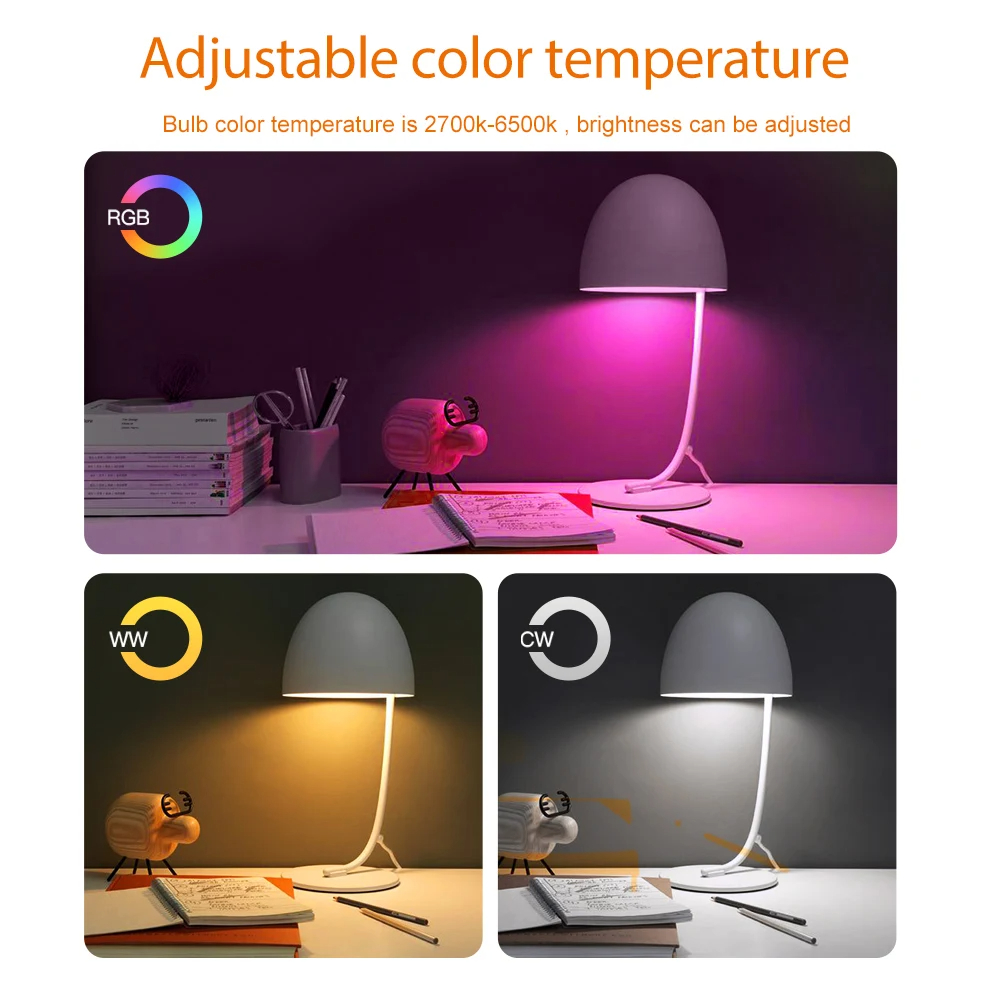Features of LED bulb include:
- Energy Efficiency: LED bulbs are highly energy-efficient, consuming significantly less power than traditional incandescent bulbs, leading to reduced energy costs.
- Long Lifespan: With a longer operational life, LED bulbs typically last tens of thousands of hours, minimizing the need for frequent replacements and reducing maintenance expenses.
- Instant Brightness: LED bulbs provide instant brightness upon activation, eliminating any warm-up time and ensuring immediate illumination when switched on.
- Customizable Color Temperature: LED bulbs offer a range of color temperatures, allowing users to customize the lighting ambiance to suit different preferences or applications.
LED bulb offer several advantages, including:
- Cooler Operation: LED bulbs emit very little heat compared to incandescent bulbs. This not only makes them safer to handle but also helps in reducing the load on air conditioning systems, especially in confined spaces.
- Color Options: LED bulbs are available in a wide range of color temperatures, from warm white to cool white. This flexibility allows users to choose the lighting that best suits their preferences or the ambiance they want to create in a particular space.
- Directional Light: LED bulbs emit light in a specific direction, reducing the need for reflectors and diffusers. This feature makes them ideal for applications where focused or directional lighting is desired.
- Durability: LED bulbs are solid-state lights, making them more robust and durable than traditional bulbs. They are less prone to damage from vibrations and shocks, making them suitable for various environments and applications.
These advantages collectively make LED bulbs a popular and sustainable choice for various lighting applications in residential, commercial, and industrial settings.
Customizable aspects of LED bulb include:
- Color Temperature: LED bulbs come in a range of color temperatures, including warm white, cool white, and daylight. Color temperature affects the perceived warmth or coolness of the light, allowing users to create different atmospheres in a space.
- Dimmability: Many LED bulbs are dimmable, giving users the ability to adjust the brightness levels according to their preferences or specific lighting requirements. However, it’s important to note that not all LED bulbs are compatible with dimmer switches, so it’s crucial to check the product specifications.
- Color Rendering Index (CRI): CRI is a measure of how accurately a light source renders colors compared to natural sunlight. LED bulbs with higher CRI values provide better color representation. This can be important in settings where accurate color perception is crucial, such as in art studios or retail environments.
- Directionality: LED bulbs inherently emit directional light, and the design can be optimized for specific directional requirements. This makes them suitable for applications where focused or directional lighting is desired, such as spotlights or task lighting.
- Smart Lighting Controls: Many LED bulbs are compatible with smart lighting systems, allowing users to control various aspects of the lighting using mobile apps or voice commands. This includes adjusting brightness, changing color, setting schedules, and integrating with other smart home devices.
- Lighting Scenes and Effects: Some advanced LED bulbs offer pre-programmed lighting scenes or special effects. This allows users to create different lighting moods or effects in a space, such as simulating a sunrise or sunset.
When selecting LED bulbs, it’s essential to consider these customizable aspects to ensure that the lighting meets the specific requirements of the intended application.
There are several packaging solutions available for LED bulb including:
- Blister Packs: Blister packs consist of a transparent plastic shell that encases the LED bulb, providing visibility to the product. This type of packaging is often used for smaller, standard-sized bulbs and allows consumers to see the bulb’s shape and design.
- Clamshell Packaging: Similar to blister packs, clamshell packaging consists of a clear plastic shell that completely encloses the LED bulb. The clamshell design allows for easy opening and closing, and it provides protection against physical damage.
- Cardboard Boxes: LED bulbs are often packaged in cardboard boxes, which can vary in size and design. These boxes typically include graphics and information about the bulb’s specifications, such as wattage, color temperature, and lifespan. Cardboard packaging is recyclable and environmentally friendly.
- Multi-Packaging: LED bulbs are sometimes sold in multi-packs, where multiple bulbs are packaged together in a single box. This is a convenient option for consumers who need multiple bulbs for a particular application, such as lighting a room or replacing bulbs in multiple fixtures.
- Tubular Packaging: For long and tubular-shaped LED bulbs, packaging may consist of a cardboard tube or cylindrical container. This design protects the bulb from breakage and allows for easy storage and transportation.
- Eco-Friendly Packaging: With a focus on sustainability, some LED bulb manufacturers use eco-friendly packaging materials, such as recycled cardboard or biodegradable plastics. This type of packaging appeals to environmentally conscious consumers.

























